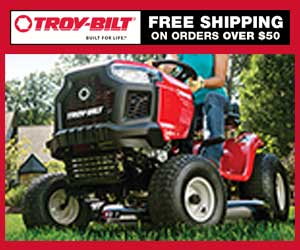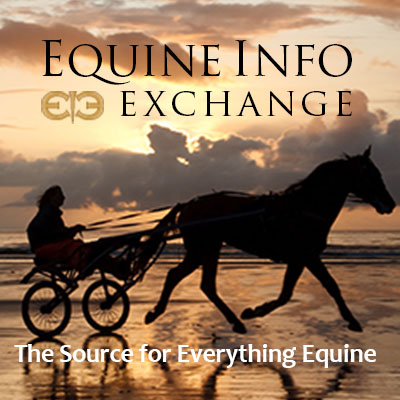Tack & Farm
Our Tack & Farm section features an Apparel section to find both practical and fashionable riding attire. If you ride English & Western or Race, many sources are available in the Tack section.
Building a barn? Need an architect for your equine dream home? Find one in Barns & Stalls.
Have a hungry horse? Of course you do! Find a place to buy your feed and tuck your horse in at night in the Bedding & Feed section. Looking for a place to keep your horse? You can find it in the Horse Boarding section. Keep your horse happy and beautiful with resources in our Grooming section.
Traveling? Find a Shipping company or Horse Sitting service if your horse is staying home!
Running and maintaining a farm or stable is a continuous effort, and to help find products or tools you need, please see our Equipment, Fencing and Management Tools sections.
Seeking Services? Find financial and tax expertise in our Accounting section. Companies who will help protect your investment are found in the Insurance section. For those who want legal advice about purchasing, liability, and other issues, please look at the Equine Law section to find an expert. Build and promote your business with teams from Marketing / Videography / Web Design.
Do we need to add more? Please use the useful feedback link and let us know!
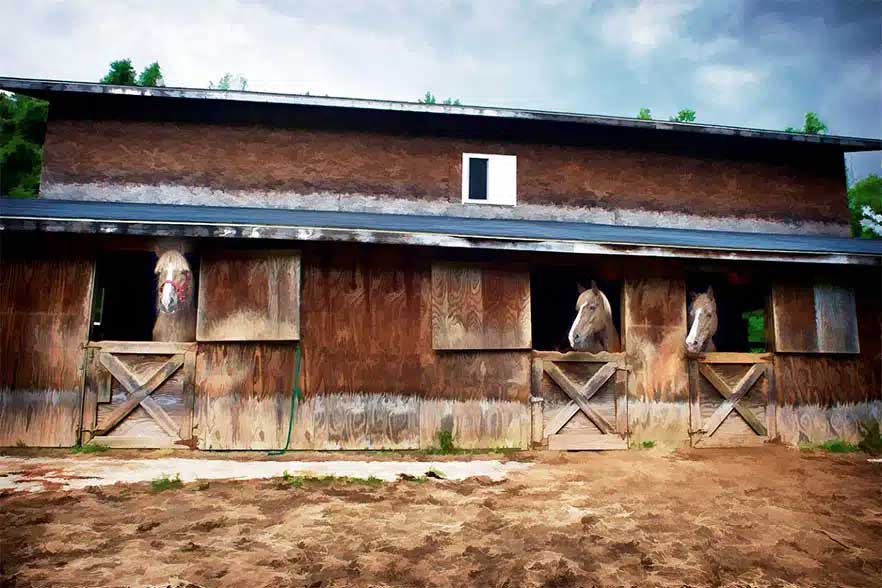
by Nikki Alvin-Smith for Horizon Structures
Despite taking every type of precaution to save a structure from destruction, the forces of nature are sometimes too powerful for any building, no matter how well constructed, to withstand.
Fire, wind, rain, and snow can cause major damage to a horse barn rendering it unusable. Despite taking every type of precaution to save a structure from destruction, the forces of nature are sometimes too powerful for any building, no matter how well constructed, to withstand.
There are many resources available online that address disaster preparedness for horse owners and recovery procedures following a calamity such as a hurricane, tornado, or fire. Check out salient advice from the folks at Texas A &M Agrilife Extension on methods to decontaminate pastures and property after flooding, clear debris and dead animal carcasses and Colorado State University Extension guidelines for wildfire preparedness.
When a region is hit by a major event such as a massive fire burning out of control or a tornado rips through a neighborhood, emergency services are activated along with lots of press coverage and helping hands. This invaluable aid often orchestrated by the government helps displaced residents and their animals find shelter elsewhere.
But many cases of catastrophic damage to the horse barn are not caused by hazardous weather events that impact a large geographical region. In the case of a barn fire or barn roof collapse there are minimal resources on hand to address issues such as temporary horse housing needed or people on hand offering to help. The horse owner is left to navigate the road to recovery alone.
Here are a few tips to help guide the property owner through the process.
Immediate Needs First
While the insurance company (hopefully the structure was insured), will send their insurance adjuster out to the site to liaise with the relevant authorities such as fire investigators or local building inspectors, the horses that were on site will need a safe haven where their well-being and medical needs can be addressed.
In most cases the horses won’t require the high level of medical attention and care that a veterinary hospital provides but will need some professional care and management. Just like humans, animals can suffer from post-traumatic stress disorder {PTSD} following a painful or scary event. Equines suffering from this condition may display colic, aggression or erratic mood changes and their immune system may be compromised due to the stress.
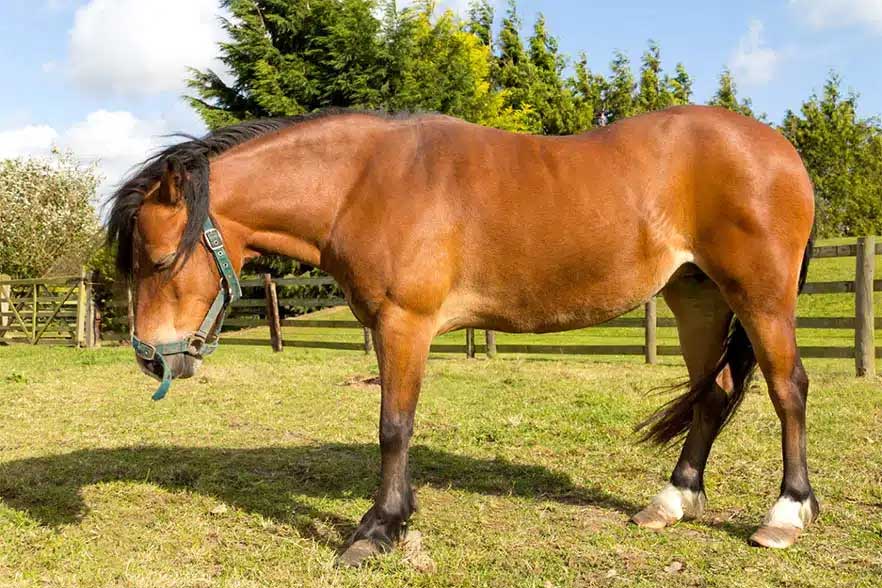
It is important that horses that are moved from their home location are monitored closely for any signs of health issues following a catastrophic event. Smoke inhalation, lameness issues or eye injuries along with PTSD are not always obvious at first glance. For this reason, wherever the horses find a soft landing, it is prudent to try and keep a weather eye on them hopefully by those that know them best.
The horse community is full of people willing to lend a hand in case of emergency needs, but they have to know there is a need to respond. Without the media coverage a major disaster generates the only way to spread word of your need is to take it upon yourself. Professional equestrian colleagues and horsey friends, your soft circle, is a great place to ask for help. Social media is a good way to spread the word of the catastrophic event and to seek locations for stabling needs. Social media platforms are also a logical place to request help funding your horses’ care needs if that is necessary.

Fleet of Angels is a grass roots not for profit organization that was originally created to get more at-risk equines rescued and adopted by making transporting them more affordable. Now, Thousands of trailer owners, over 2300 layover hosts, over 500 quarantine providers, and hundreds of other service providers have joined our network. As a result, FOA has been able to help thousands of at-risk equines. Fleet of Angels has expanded its services to include providing emergency grants for 5000 +/- horses a year in response to natural disasters and other critical situations that put equine at serious risk.
More Info HERE
Read more: How To Manage Horse Barn Needs After Catastrophe Strikes
Equitopia joins up with Lisa Fay and Georgie Welge from Master Saddle Fitters International to demonstrate what to look for in a Professional saddle fitting. Don't forget - a correctly fitting saddle in integral to your horse's soundness.
Read more: Equitopia - What to Expect in a Saddle Fit Evaluation (5:16)
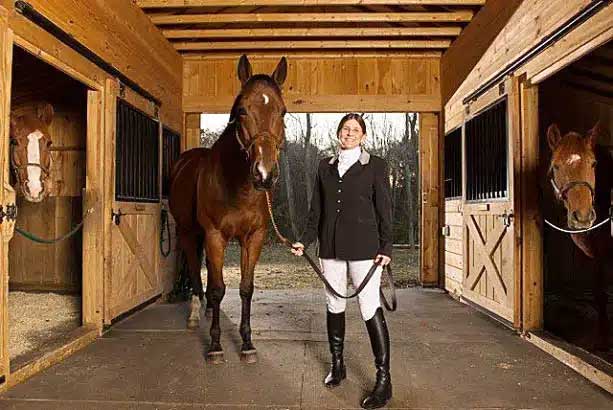
Performance horses that are out and about can bring home more than just ribbons. The ultimate success in a competition depends on making smart choices and establishing and following sensible protocols.
It is not easy to juggle the challenges of training horses and running a busy barn at home while also getting out on the road and competing against your peers. Horses that are working at different performance levels have very different requirements in their daily care.
Addressing the special needs of competition horses is an essential component of ensuring they are fit and healthy and at peak levels of performance when the time comes to showcase their talents in the arena. To optimize these horses’ care, it makes sense to plan your barn design to factor in how to best manage these needs. The goal is to make sure these noble athletes are kept as happy and content as possible while also maintaining good horse keeping for the equines that stay home.
Performance horses that are out and about can bring home more than just ribbons. Contagious diseases are just one concern. Injuries, soreness, stress, and anxiety are others. Mitigating the risks associated with these issues is a number one priority for the trainer and horse owners. The ultimate success of any equine business enterprise or individual rider’s success in competition depends on making smart choices and establishing and following sensible protocols.
If the barn building has not yet begun the opportunity to cater for the requirements of the competition horses is one of those smart decisions. There are many barn designs that can accomplish a better daily routine and care experience for all the horses in the barn, whether they are in retirement or winging their way over puissance fences at weekends.
Here are a few ideas to help you navigate the options available to make the best choice to suit your needs and budget.
The ‘West Wing’ Option
Building your competition horses their own ‘wing’ is a great design choice.
In days gone by large manor houses and estates would often add an adjunct building to their main structure for guests to enjoy in adjoining quarters, the so called, “East or West Wing.”
The wing(s) of a house was usually a subordinate part to the main structure that provided privacy between family and guests. The wing would be either adjoining that main structure or be connected to it by an esplanade, pergola, or similar structure.
When it comes to keeping competition horses the idea of maintaining a different area specifically designed for their particular needs is a good one, and it can be accomplished in a myriad of ways.
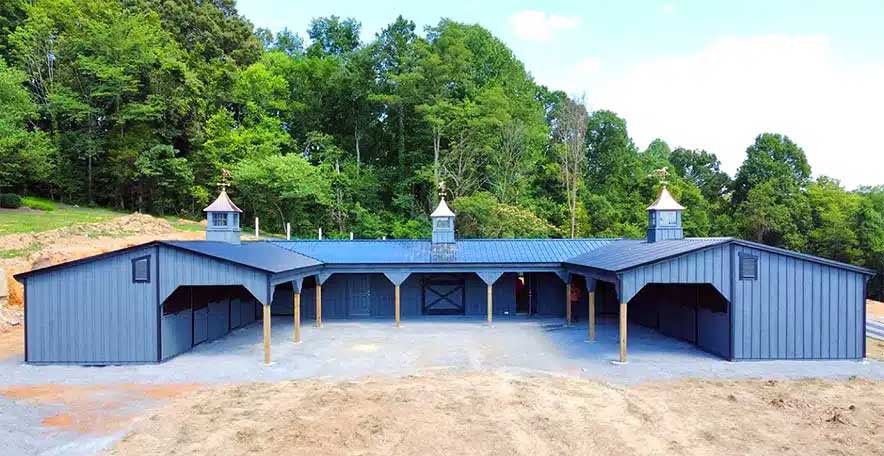
A simple method is to set shedrow barns at an angle away from each other. This is a budget friendly way to achieve the goal of providing space between ‘home’ and competition horses.
Other options include building a separate show barn altogether or adding a center aisle row of stalls either in a second row or at a right angle within a large barn.
Whichever way you choose to attain the separation of the resident equines, the net result will be a great benefit to both them and their caregivers.
Added Advantages
Here are the many advantages of adding a separate wing to accommodate competition horses:
- Quarantine practices are made simple for keeping horses that go back and forth to show grounds apart from their compatriots left at home.
- Competition horses’ needs for extra feed rations can easily be implemented throughout the day without disturbance to other stabled horses’ routines.
- Tack and equipment can be stored separately to ‘home’ horses.
- Extra security can be added to the special wing such as video monitoring and passcode entrances.
- Additional electrical outlets can be placed by each stall together with extra brackets and places to hang haynets/IV fluids and hydration care.
- The ‘wing’ can be fitted with fly control and fire protection systems.
- Special storage for blankets/tack, high end exercise or medical treatment equipment can be set up handy for daily use within the space of the ‘wing’ without worry of it being tampered with or damaged in a busier barn area.
- A ‘show’ tack room, working day equipment area, specialist grooming and bathing stalls with heat lamps etc. and feed room can be incorporated in the build. The assigned tack room will make it easy to load the show trailer and secure and access the specialist and expensive tack and equipment that may be needed for competition. While the feed room will help ensure no cross contamination or misuse with other hay supplies, grain rations, or supplements on the property.
- It is straightforward to site specialist footing turn out paddocks or lanai’s close to the competition barn separate from the main pastures on the property used for ‘home’ horses or a hot walker can be added.
- A separate ‘show’ barn can be sited close to the home on the property for security and monitoring and ease of access.
Read more: Barn Design and Management Tips For Competition Horses
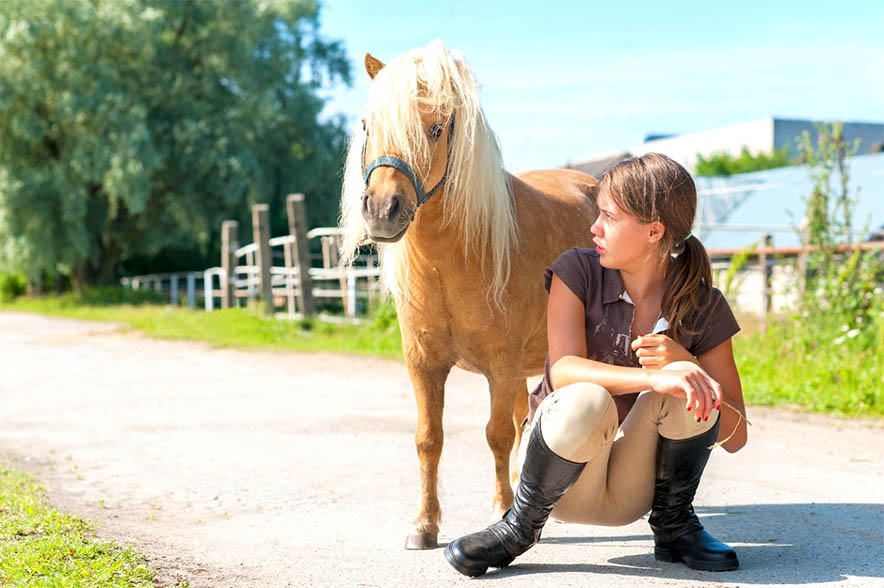
CLICK HERE FOR AN EIE BOARDING CHECKLIST
by Nikki Alvin-Smith for Horizon Structures
There is nothing easy about running a horse boarding barn. Difficult horses and difficult horse boarders can make daily life miserable for both management and staff at any facility. The development of a new horse boarding business often necessitates a major capital outlay for suitable stabling facilities. The notion that once a beautiful barn is built, the equine and human counterpart clients will exist in harmony under its roof is often more a fairy tale than reality.
There are many reasons that things take a wrong turn and life as a horse boarding barn manager becomes a nightmare. Difficult horses can make restless bedfellows for their compatriot equine residents with their persistent neighing, circling, rearing, or kicking habits. Cribbing or windsucking behavior from an individual equine can wreak havoc on the pristine new wood structure and can quickly be copied by other impressionable equines.
Horses that are left to themselves too much of the time will become bored and sometimes behave badly, and when their owners don’t show up to exercise them or work with them on training even a good horse can turn into a bad actor.
It takes just one obnoxious horse owner to make daily life miserable for the staff and manager of the equestrian facility. This could be a client that makes persistent phone calls and engages busy farm staff in longwinded chats full of unwanted and unwarranted advice on how their horse must be cared for is a routine nobody wants to endure. Or a client that constantly shows up after hours wanting access to ride and use the facilities. Then there are the ‘aisle hoggers’ who leave their horses attached to crossties for long periods often leaving them unattended into the bargain. And don’t forget the ‘help myself’ borrowers that upset everyone by using other people’s equipment without asking or the folks that don’t bother to clean up after their horses by rolling up hose pipes, sweeping hoof pickings, or even pick up poop piles from the aisleway.
To get ahead of these horse boarding problems and others like them there are some surprisingly simple methods that can be employed to minimize and mitigate the risk of negative issues arising at the boarding barn.
Clever Barn Design Tricks and Tips
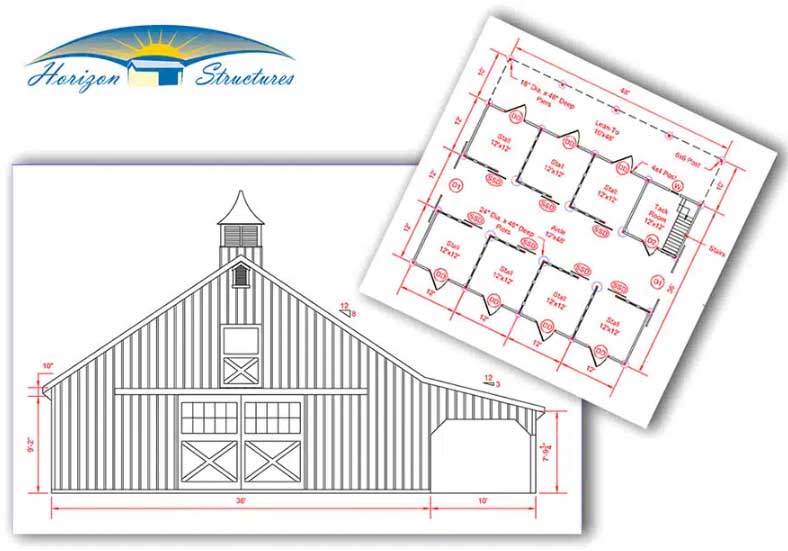
Smart design of the horse barn can help defray points of contention during daily horse care. Here are a few key considerations to bear in mind during the planning of your new barn project:
- Add extra points of access to the center aisle barn midway along the long side as well as at gable ends of the building. This will minimize the need for horses to be led past each other for turnout or riding and provides the added bonus of being able to work in the aisleway mucking stalls or cleaning up without blocking use of the entire barn.
- Avoid crossties in aisleways. A grooming/bath stall placed either centrally or at the end of the barn allows owners to go directly from tacking and grooming to outside riding and back again without constant walking back and forth in the aisle disturbing horses at rest.
- Place tack rooms close to grooming stalls. Keep ‘in house’ lesson tack and equipment in a separate space to boarders’ storage areas. Add a heavy-duty combo lock to the tack rooms and automatic closure to the doors so the tack rooms cannot be inadvertently left open. Provide all horse boarders with a lockable tack box or storage unit so they can secure their belongings.
- Make dividing stall walls of solid lumber rather than grilled halfway up, high enough to deter horses from being able to sniff nose to nose over the top board and sturdy enough to withstand kicking with adequate kick walls.
- Keep supplies such as hay/bedding under lock and key if possible in a separate storage structure.
- Build a secondary smaller barn that can be used for quarantine purposes or to house horses that are bad actors.
- Offer more than one style of horse keeping method by having more than one barn. For example, a barn with Dutch doors to the exterior and a ‘calving’ style paddock or lanai may work well for retiree horses or rehab purposes while a high-strung performance horse may do better with a standard stall and daily handling and turnout in a larger paddock or treadmill/hot walker for exercise.
- Have a gated entrance to the property that can be secured with a passcode if necessary to avoid unwanted visitors after regular business hours.
- Offer training services for clients’ horses that require behavioral management to improve the horse’s understanding of how to behave in a safe manner and similarly offer to train the client if necessary. Consistency in horse handling techniques is essential for a successful outcome in any training endeavor.
Make Good Rules and Enforce Them
The method a horse boarding barn is managed varies greatly across the industry. Rough board, partial board, or full board can make the business challenging to manage when all are offered in one facility. For example, if the barn rules and terms and conditions of leasing a stall at the barn state that the barn management will be responsible for all turnout schedules and horse handling back and forth to pastures, executing deworming and fecal worm count procedures, it is not helpful to have one or two ‘rough’ horse boarders coming and going as they please and not subject to the same rules for their horses’ care.
- To Fence or Not to Fence? That Is the Question
- The Art and Heart in Timber Frame Horse Barns and Pavilions
- Working Saddles for Working Horsemen
- Don Gonzales: Riding the Wave of Social Media
- Steve Mason: High Quality in High River
- Just One More Horse
- Clinton Hole: Finding a Niche
- Brandit Franco: Drifting No More
- Big-Small World of Leathercraft, South African Edition
- Overcoming The Challenges of Moving Horse and Home






